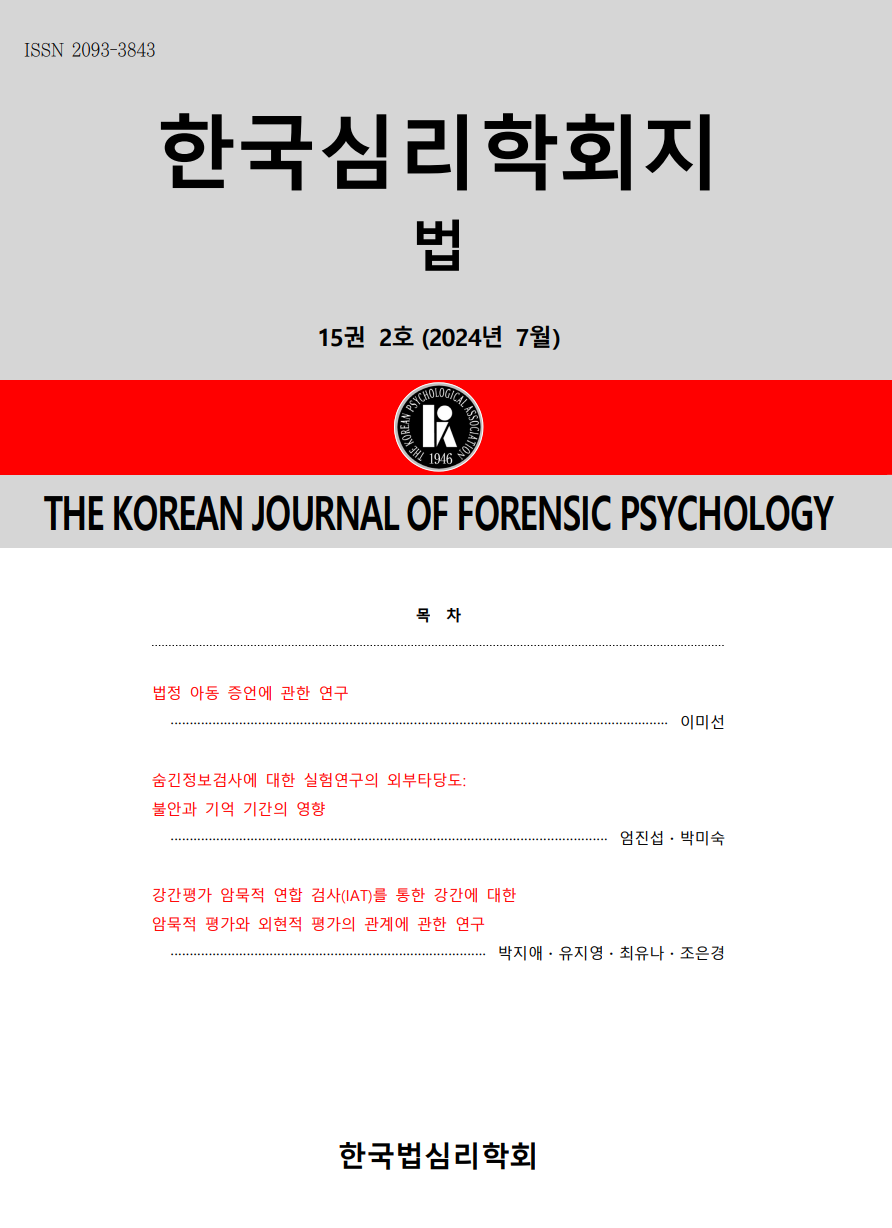open access
메뉴
open access
메뉴 ISSN : 2093-3843
ISSN : 2093-3843
Confessions are highly probative in criminal trials. This study aimed to explore the relationships between laypersons' evaluations of a set of evidence, including confession evidence, in a legal case. The study manipulated the way confession evidence was presented at three levels (no confession/initial presentation/late presentation, a between-participants factor) and measured the probative value of all of the presented evidence at two time points (initial evaluation/reevaluation, a within-participants factor). Using data from 93 participants, several network analyses were conducted. The results indicated that the importance of confession evidence varied depending on whether it was presented early or late. The initial evaluation networks exhibited weaker connections between evidence, whereas the reevaluation networks displayed stronger connections. In particular, the connections between pieces of evidence, including confession evidence, were stronger in the conviction networks than in the acquittal networks. Individuals who rendered guilty and not guilty verdicts evaluated the importance of the same evidence differently or assigned different weights to the link between the same pair of evidence. This implies that the validity of coherence-based decision theories. Furthermore, it is also suggested that further research should be conducted using different methodologies on the impact of confessions.